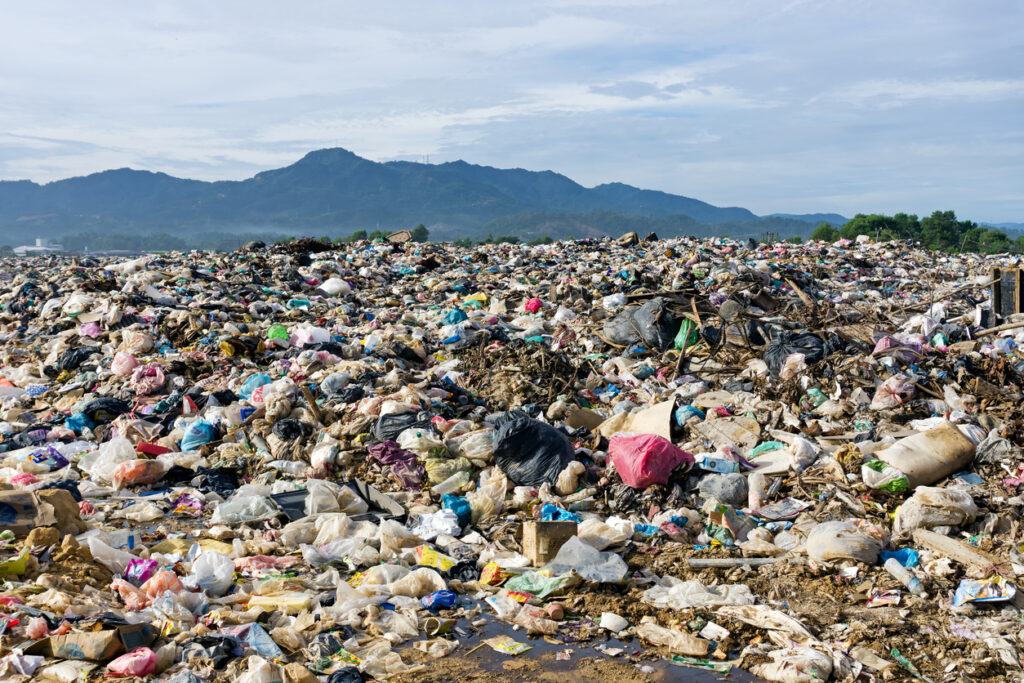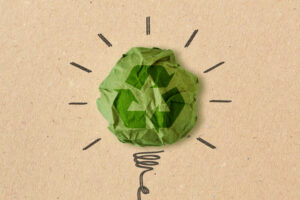Resource Conservation Benefits

Recycling helps conserve valuable natural resources such as timber, water, minerals, oil, and coal. By reusing materials instead of extracting them from the earth, we reduce the pressure on ecosystems and protect biodiversity.
For example:
- Paper can be recycled up to eight times before the fibres become too short, and producing recycled paper uses up to 60% less energy and less water than making it from virgin pulp (Sustainability Victoria).
- Glass, aluminium, and steel can be recycled infinitely without losing quality, making it unnecessary, and wasteful – to keep mining and refining new raw materials. Recycling aluminium saves up to 95% of the energy required to make it from bauxite ore (Australian Government – DCCEEW).
Water Conservation Through Recycling
Recycling isn’t just about saving raw materials –t also plays a role in protecting one of our most precious resources: water.
Producing goods from recycled materials often uses significantly less water than manufacturing from virgin resources. For example, the paper recycling process consumes less water overall than creating paper from freshly cut timber, helping reduce demand on Australia’s rivers, dams, and groundwater supplies (Sustainability Victoria).
Recycling also helps prevent water pollution. When materials are sent to landfill instead of being recovered, they can break down and release leachate, a contaminated liquid that can seep into soil and waterways. By keeping recyclable materials out of landfill, we reduce the risk of harmful chemicals entering our water systems.
Energy Savings by Material Type
Recycling often uses far less energy than manufacturing products from raw materials. This energy saving reduces greenhouse gas emissions and helps conserve finite energy resources like coal, natural gas, and oil.
Examples of energy savings across common materials:
- Aluminium – Recycling aluminium saves up to 95% of the energy required to produce it from bauxite ore. This makes it one of the most energy – efficient materials to recycle (Australian Government – DCCEEW).
- Paper – Producing recycled paper uses up to 60% less energy than making paper from virgin fibre (Sustainability Victoria).
- Plastics – Recycling plastics can save up to 70% of the energy compared to creating them from petrochemical feedstocks (Planet Ark).
- Glass – Recycling glass saves around 30% of the energy needed to make new glass from raw materials, largely because cullet (crushed recycled glass) melts at a lower temperature (Sustainability Victoria).
- Steel – Recycling steel saves between 60–74% of the energy compared to producing it from iron ore (Planet Ark).
When multiplied across millions of tonnes of material each year, these savings translate into significant reductions in Australia’s overall energy consumption and carbon footprint.
Climate Change Impact Reduction
Recycling plays a critical role in lowering greenhouse gas emissions, helping to slow the effects of climate change. When we manufacture products from recycled materials, we use less energy, which in turn means fewer fossil fuels are burned and fewer emissions are released into the atmosphere.
It also prevents powerful greenhouse gases from being generated in landfill. When organic materials like food scraps or green waste are buried and compacted without oxygen, they break down anaerobically, producing methane – a gas 28 times more potent than carbon dioxide over a 100 – year period (Australian Government – Department of Industry, Science, Energy and Resources).
By recycling and composting instead of sending waste to landfill, we can:
- Cut methane emissions from decomposing organic waste.
- Reduce carbon dioxide emissions from manufacturing processes.
- Support Australia’s climate targets, such as net zero by 2050.
Pollution Prevention Benefits
Recycling is more than just keeping waste out of landfill – it’s also about preventing pollution across air, water, and soil. By reducing the need for resource extraction and landfill disposal, recycling cuts harmful emissions and contaminants that can damage ecosystems and human health.
Air Pollution Reduction
Manufacturing products from recycled materials generally produces fewer airborne pollutants than making them from virgin resources. For example, recycling aluminium avoids the significant dust, particulates, and greenhouse gases released during bauxite mining and smelting (Australian Aluminium Council).
Burning waste materials—still common in some countries—releases toxic gases and fine particles. Recycling helps avoid these emissions entirely, contributing to better air quality and public health.
Water Contamination Prevention
When waste breaks down in landfill, it can produce leachate, a toxic liquid that can seep into surrounding soil and waterways if not properly contained. Recycling keeps many of these materials, especially metals and hazardous waste, out of landfill, reducing the risk of leachate escaping into rivers and groundwater (Sustainability Victoria).
Recycling also reduces water pollution upstream by cutting the need for mining and processing raw materials, activities that can cause sediment runoff, chemical spills, and habitat destruction in waterways.
Soil Protection
Landfills can release harmful chemicals into the surrounding soil, altering its composition and reducing fertility. Metals, plastics, and electronic waste are particular culprits. Recycling these materials prevents them from degrading in landfill and leaching heavy metals or persistent chemicals into the soil (Australian Government – DCCEEW).
By reducing demand for landfills, recycling also limits the land area being disturbed or permanently altered, helping preserve agricultural land and natural habitats.
Waste Management & Landfill Considerations

Recycling is a key tool in Australia’s strategy to reduce the amount of waste sent to landfill. It extends the life of existing landfill sites, reduces the environmental hazards they pose, and supports a more circular economy where resources are reused rather than buried.
Australia’s Landfill Crisis
Many of Australia’s landfill sites are nearing capacity – particularly in urban areas where land is scarce and expensive. For example, Melbourne’s major landfills are expected to reach capacity within the next decade unless waste volumes are reduced (Sustainability Victoria). Establishing new landfill sites is challenging due to community opposition, regulatory requirements, and environmental concerns.
Landfills also produce methane, a greenhouse gas 28 times more potent than carbon dioxide, and can generate leachate that contaminates soil and water. By reducing waste at the source and recycling more materials, we can slow the rate at which these sites fill and minimise their environmental footprint.
Landfill Diversion Statistics
In 2021–22, Australia generated an estimated 75.8 million tonnes of waste. Of this, 60% (45.9 million tonnes) was recovered through recycling and energy recovery, while 40% (29.9 million tonnes) still went to landfill (Australian National Waste Report 2022).
Victoria has set a target to divert 80% of waste from landfill by 2030, supported by reforms such as the introduction of a four – bin household system and investment in new recycling infrastructure (Sustainability Victoria).
Every tonne of waste diverted from landfill through recycling not only conserves resources but also reduces the environmental risks and financial costs associated with waste disposal.
Economic Environmental Benefits
Recycling delivers clear economic gains alongside its environmental advantages. It creates jobs in collection, sorting, and processing, and supports industries that turn recovered materials into new products. The sector contributes billions of dollars to the Australian economy each year, with recycling generating far more jobs per tonne of waste than landfilling.
For businesses, effective recycling programs can also reduce waste disposal costs, especially in states with landfill levies, while improving sustainability credentials. Government investment in recycling infrastructure is further driving innovation, strengthening local manufacturing, and reducing Australia’s reliance on imported raw materials.
To find out more about the recycling services KS Environmental can offer your home or business, please contact us. We’re here to help you make waste management simpler and more sustainable.



